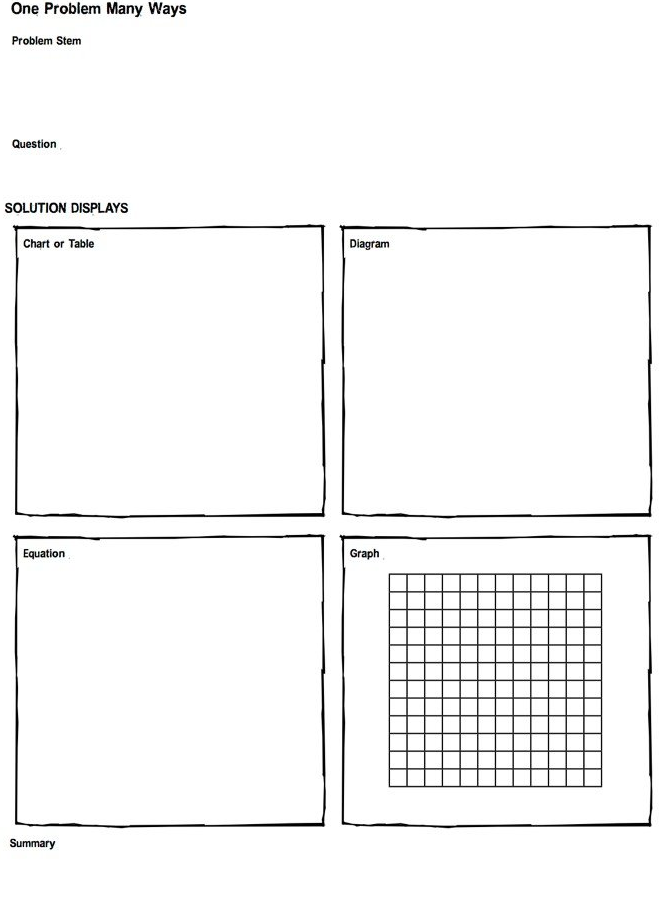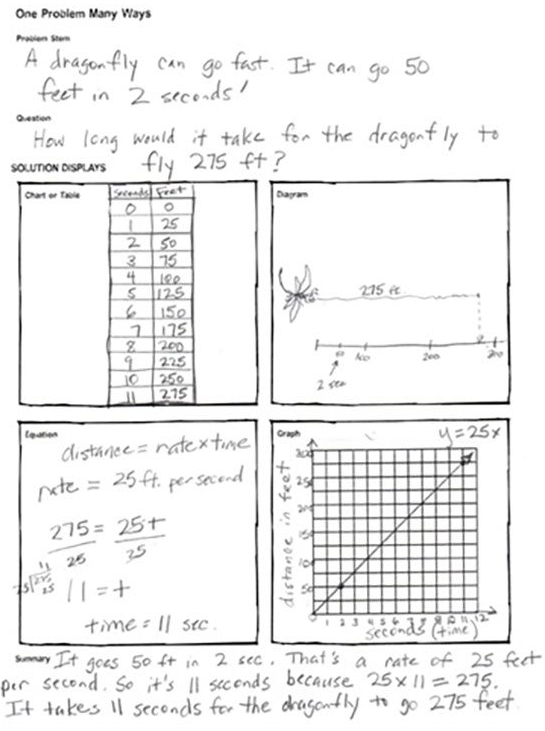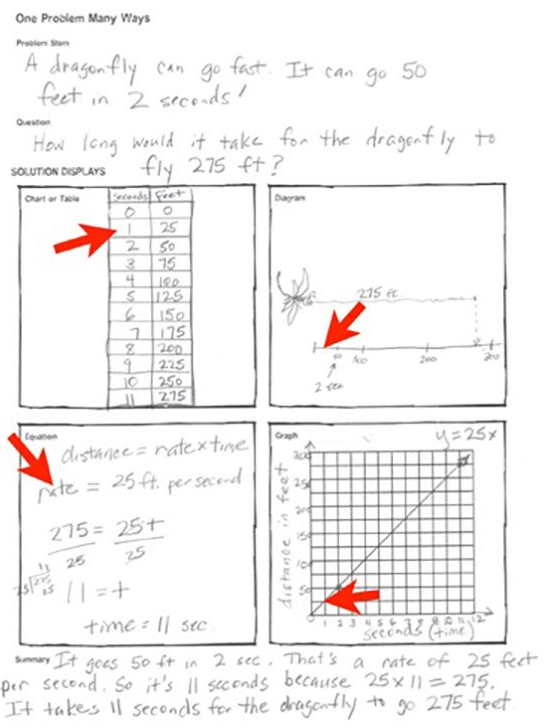Using Multiple Representations
One Problem Many Ways
With this approach, students learn how to make sense of word problems by matching or generating various representations of problems such as an equation, table, diagram, or graph. By systematically making connections between these different forms throughout the year, students will better understand different situations and will continue to develop the underlying mathematics. As students learn to write word problems, they will encounter the related structure, language, and text, thus making such problems easier to solve.
Students are given different representations (word problem, equation, table, graph/diagram) and they have to produce the rest. The number of representations provided by the teacher varies based on the readiness of the students.
download PDF of worksheet
Opportunities for Reasoning
Consider the many options teachers have to have students reason through the meanings of these representations by providing some, but not all, of the representations and asking them to provide the rest.
The marked up versions below show the versatility of the worksheet. Our group found that asking students to use the familiar format for a challenging thinking task (such as composing a stem and question from an equation) helped them a great deal.
Using Multiple Representations to Build Concepts
Finally, here is an example of making a specific mathematical point when using multiple representations.
For example, imagine you are teaching the concept of unit rate to your class. From a single activity, you could have four familiar and helpful examples to discuss with the students.
SERP has been supported to conduct this work by the S.D. Bechtel, Jr. Foundation.
This work is licensed under a Creative Commons Attribution-NonCommercial-ShareAlike 4.0 International License.






